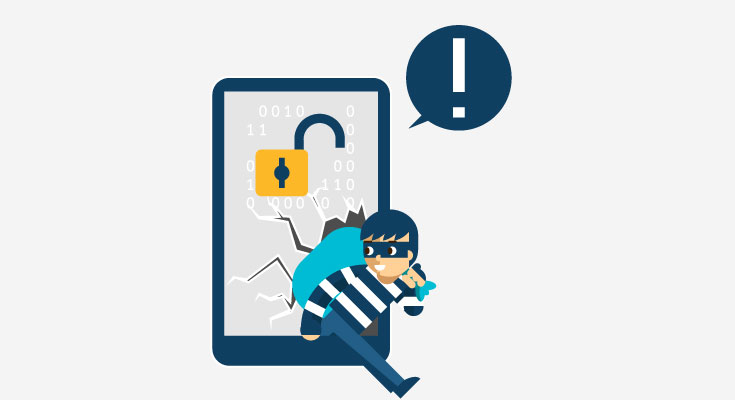Mobile Fraud – How Does it Work, How to Prevent it?

Chances are that you’re reading this blog on your smartphone. That’s because over 60% of all online traffic comes from smartphones. We use our mobile phones for a lot of things, online accounting, social media, emails, and so much more. We carry it with us all the time and use it for every small thing. Smartphones have become an integral part of our personal and professional lives. So, it makes sense that fraudsters would want to gain access to your smartphone.
Mobile fraud has become a major concern in recent years. Just by accessing a single device, fraudsters can take over every single thing they need to. The threat to personal finance and security is very real.
In this guide, we’ll cover the five biggest mobile fraud threats and the best fraud prevention best practices.
Techniques Fraudsters Use for Mobile Fraud
Fraudsters keep coming up with new and interesting ways to conduct fraudulent activities. Although, there are some tried and tested techniques that work in their favor. So here are the top 5 mobile fraud threats that fraudsters love to try:
1. SIM Cloning & SIM Swapping
A common mobile fraud technique that fraudsters use is to take over an individual’s online accounts. This helps them ‘socially engineer’ access to their bank account and other personal and financial data.
This is done by collecting personal data from multiple sources, including messaging and social media sources. Then they use this data to try and persuade the mobile operator to issue a new SIM that a fraudster uses to get all the one-time passwords (OTPs) to access your accounts.
If this method isn’t successful, fraudsters use smart card copying software or use remote hacking to clone a SIM Card.
Cloning a SIM card provides access to all the data, and account details. Through this, they can conduct all kinds of fraudulent activities.
2. Device Cloning
Device cloning is another commonly used mobile fraud technique fraudsters use. Our smartphones contain all the apps and personal data that you need to access services like online banking, online stores, etc.
Fraudsters can transfer data and services from one mobile device to another one, making a clone of the original device. Fraudsters can make calls and conduct transactions from cloned devices without specific checks.
3. Caller ID Spoofing
Your Caller ID is the number visible to the people you’re calling. This helps others to identify who the call is from. Fraudsters can create false caller IDs from a local service provider/company that the victim knows. When the victim picks up the call, the caller tries to obtain personal information under false pretenses.
Calls and messages are sent from this fake ID to trick the victims into divulging personal/confidential information. Once the call or message is answered, the fraudsters will use social engineering methods to persuade victims to provide confidential information.
4. Recycling Phone Numbers
When a mobile user’s account is closed, the mobile operator will release the phone number again after a short period of closing the account. Now the number can be reassigned to someone else and can be used by some other user.
Today, it has become a common practice that mobile numbers are associated with personal accounts. Allowing for the transfer of funds using mobile numbers. A lot of fraudsters activate old mobile numbers with the aim of finding a number that has been recently recycled.
This number can then be used to access accounts linked with the number.
5. Call Forwarding
Call Forwarding is another mobile fraud technique used by fraudsters. In some online transactions, customers are asked to prove whether they have the mobile in their possession or not. This is done by sending a one-time password to the customer.
Sometimes, fraudsters call or text an intended victim, asking them to forward their call on to someone else. This can be done for any fake reason. Once the victim forwards inbound calls and texts to a fraudster’s device, the fraudster will be able to access all the one-time passwords needed to access personal accounts.
Fraudsters can now access accounts, make payments, and conduct other frauds without the victim ever knowing.
Use of Real-Time Data for Preventing Mobile Fraud
Mobile phones have become an undeniable part of our lives. Without smartphones, there are hundreds of things we won’t be able to accomplish on regular basis.
Mobile phones provide unique data in that it is the only source of ‘dynamic’ data on what’s happening in ‘real-time’. This dynamic data can be used to immediately figure out if a device has been lost or stolen, or if a SIM card has been recently swapped. It can even help in figuring out if the inbound calls or texts have been forwarded.
By using mobile data, you can keep fraudsters out, and it’s also helpful in identifying good guys. Companies can do mobile data checks behind the scenes to access online services securely, quickly, and easily, and ensure that customers won’t fall prey to mobile fraud.













